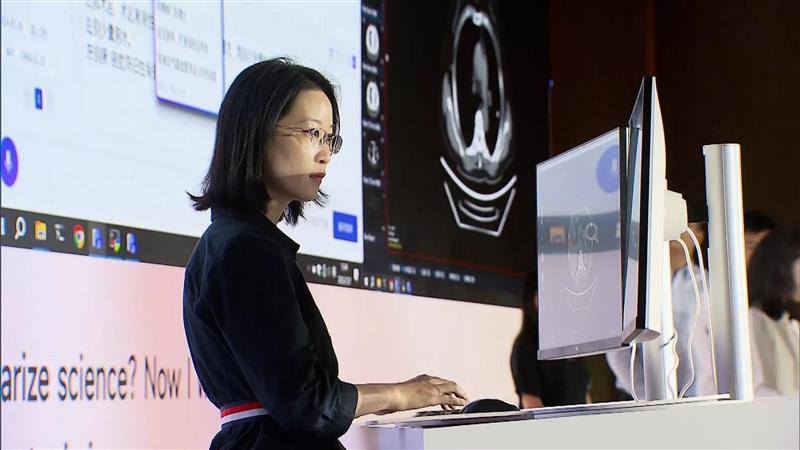
At Shanghai’s World AI Conference, radiologists faced off against a cutting-edge diagnosis AI in a live chest X-ray contest, highlighting where machines excel in speed and where humans dominate in empathy and nuance.
Even though the AI-assisted team finished 40% faster, human radiologists produced more coherent reports and caught subtle findings the algorithm missed.
The event revealed “One-Scan-for-All” where an AI detected 73 chest conditions with 85% accuracy, but also revealed persistent challenges, such as diagnosis bias and patient distrust of machine only conclusions.
The conflict, known as the AI-Human Synergy Competition, was a glimpse into what is elevating the work of doctors using AI. As healthcare systems rely increasingly heavily on wiser technologies, issues of AI diagnostic speed as well as accuracy are under the spotlight in debate on the future of diagnosis.
AI vs Doctor Diagnosis
Six of Zhongshan Hospital’s top radiologists were split into two groups, one on their own, the other with the help of diagnosis AI and analyzed live on-stage chest x-rays. The AI-assisted team completed the analysis quicker but skipped a few key findings. Though slower, the human team on their own submitted more readable and thoughtful reports.
“I noticed our senior physicians carefully adjusted the structure of the report,” said Wang Yi director of the radiology department at Peking University People’s Hospital.
“They made it into a coherent report with clear internal logic, unlike the AI-generated version where each item was listed separately,” he added, relating to consistent complaints about AI diagnostic transparency standards.
“In terms of time, AI is faster. Accuracy is roughly comparable, but I have to say the manual group feels warmer and more empathetic,” Zeng Mengsu, who oversees diagnostic radiology at Zhongshan Hospital, noticed.
This brings up the issue of AI patient preference, especially when empathy is as crucial as accuracy.
Whereas medical AI performance was solid, the human team caught things AI missed. And although the system was speedy, the quality of its messaging continues to be a work in progress. Physicians also were more likely to provide follow-up advice, illustrating how physician acceptance of AI could be based upon how well it’s integrated into human care processes.
Powered by Smart Scanning
The isolated AI program “One-Scan-for-All” has been designed by United Imaging Medical Technology and Zhongshan Hospital. It identifies 73 common chest illnesses, from nodules to the calcification of arteries, all via one scan.
The creators are trying to improve AI medical diagnosis accuracy, pushing its current 85% success rate to 95%. Zhou Xiang, co-founder of United Imaging Intelligence, said they’re now working on expanding their tech into brain and abdominal imaging.
“So far, we’ve covered over 30 diseases, and are now expanding into orthopedics, ultrasound, and abdominal imaging,” he noted, with hopes of improving diagnosis AI performance across specialties.
However, concerns like AI diagnostic bias and long-term credibility remain. Events like this live medical AI competition are helping to show where intelligent technology is on top and where it still has a lot to catch up on.
As one industry expert explained, diagnosis AI might be fast and smart, but human care is still in the picture. The ability to personalize recommendations and communicate sensitively highlights a key limitation in current AI. It’s a lack of emotional intelligence.
While diagnosis AI supports healthcare professionals, is it ready to take on frontline diagnostic roles alone, or is it true value in working alongside human expertise?
Inside Telecom provides you with an extensive list of content covering all aspects of the Tech industry. Keep an eye on our Medtech section to stay informed and updated with our daily articles.